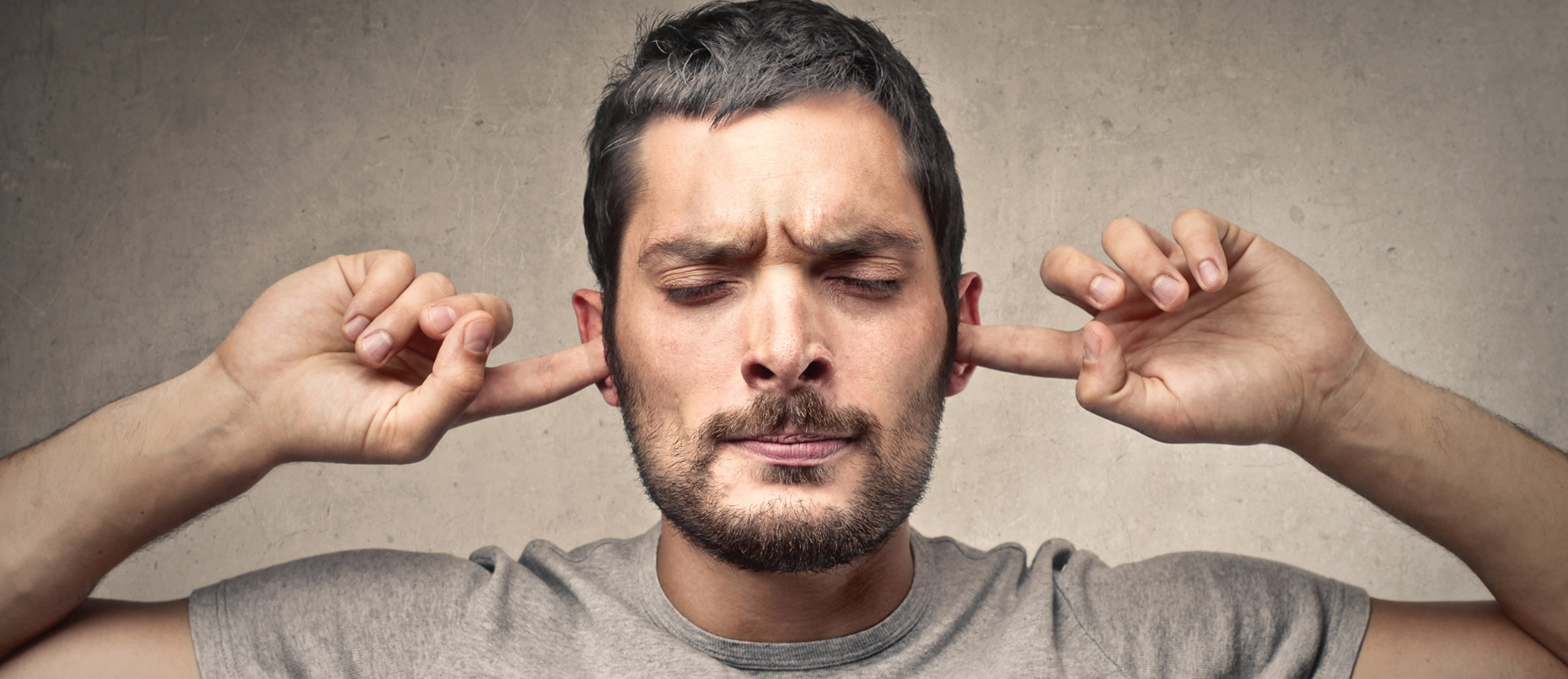
What is hyperacusis?
Hyperacusis is when acceptable-volume sounds or noises cannot be tolerated. People with hyperacusis hear sounds louder than they really are. They might say that they hear everyday sounds “too much.” For example, people with hyperacusis are bothered by sounds like washing the dishes, crowds, laughing, a phone ringing, children yelling or a vacuum. Someone with hyperacusis does not have better hearing than normal.
Causes and factors related to hyperacusis
- Prolonged exposure to noise
- Acoustic trauma (sudden noise)
- Head trauma or surgery
- Ear problems
- Facial paralysis
- Stress, anxiety, depression
- Migraines
- Perception of tinnitus
- Other
Effects of hyperacusis on daily life
- Stress, fatigue, irritability
- Overprotection of hearing
- Avoidance of social activities and locations thought to be too noisy
- Difficulty doing certain daily activities (vacuuming, driving a car)
- Tension/conflict in the family or at work
- Isolation
Hyperacusis testing
An audiologist conducts the sound intolerance test using questionnaires and hearing assessments done in a soundproof room. The questionnaires help assess the impact of sound intolerance on the patient’s daily life, the degree of discomfort the intolerance causes, whether or not the patient is overprotecting his or her hearing, the patient’s general health and his or her level of anxiety or depression. They also help pinpoint problematic sounds and daily activities and the steps the patient has already taken to remedy the situation.
The tests done in a soundproof room measure perception of sound intensity (the patient rates different sound intensities, from weak to strong) and the patient’s level of discomfort (he or she identifies the level of intensity at which sounds become uncomfortable).
Hyperacusis solutions
Systematic desensitization program
Systematic desensitization is the main treatment for hyperacusis. It trains the auditory system to better tolerate sounds from the environment. Sound desensitization may be established as a part of a treatment plan by the audiologist and the patient.
Avoid overprotecting your hearing
Think how your eyes adjust to a change in lighting. Imagine you’re in a dark movie theatre and have just walked out into bright daylight. Everything seems glaringly bright to you, but not to people who were not in the theatre. Your eyes got used to the darkness and now must get used to the light.
Your ears adjust to sounds in the same way your eyes adjust to light. If you stay in silent places, your ears will not be used to hearing noise. After a period of time, normal daily noises will seem louder and will be harder to handle.
This is why hearing protection (earplugs, headphones) should not be used during daily activities. The Sound Volume Scale and Normal Human Reactions table is a tool that helps us recognize situations in which hearing protection would be necessary (danger zone causing possible damage to the auditory system).
Enrich your sound environment
Begin to surround yourself with background noise using any sounds that aren’t irksome to you. The goal is to avoid total silence so you can help your ears readjust. Some examples of sounds to use are:
- Music at a comfortable volume
- Radio or television
- A running fan
- A tabletop water fountain
- A sound generator
If you’re in a situation where the sound is too bothersome, it’s better to move gradually away from the source until the volume is tolerable than to withdraw completely from the sound’s source.
Ear-level sound generator
In experimental research, people who wore ear-level sound generators could tolerate more sounds after two weeks. The device gradually delivers controlled, continuous sound directly to the ear. The added sound enriches the environment, helping the ears reset their sensitivity level.
Complementary solutions
- Stress, anxiety management
- Relaxation, breathing
- Sleep hygiene
- Psychological therapy
Managing the reaction / Habituation
The association with a negative reaction becomes an unconscious reflex in the brain. The brain has to be re-educated to change this reflexive reaction to a more neutral reaction. There are several techniques to help develop a neutral reaction to sounds. An audiologist can teach you these techniques.
Other types of sound sensitivity
Misophonia
- Intense intolerance of specific sounds in specific situations
- Other sounds of the same intensity are easily tolerated
- Bothered by the psychological aspect of the sound (e.g. does not like a sound)
Phonophobia
- Fear and anxiety regarding specific sounds
- Psychological phenomena
Loudness recruitment
- Inner ear disorder that creates an abnormal perception of a sound’s volume
- Associated with hearing loss
If you have hyperacusis, see an audiologist now. He or she will first evaluate your hearing and your comfort level with certain sounds, and then check whether your auditory system might be the cause. The audiologist will assess your degree of hyperacusis and design a personal treatment plan to help you step by step.

